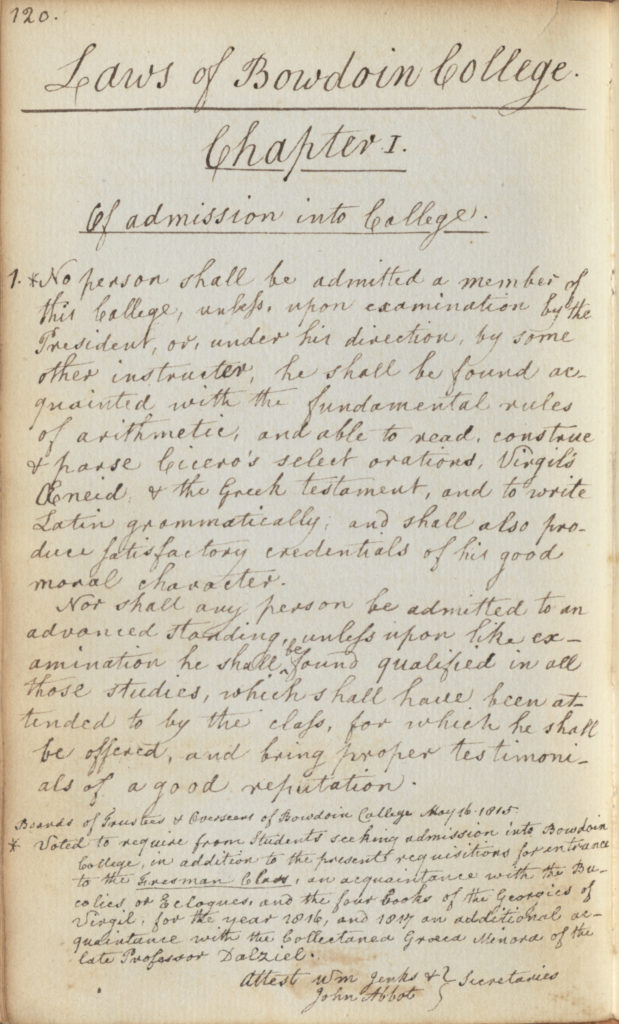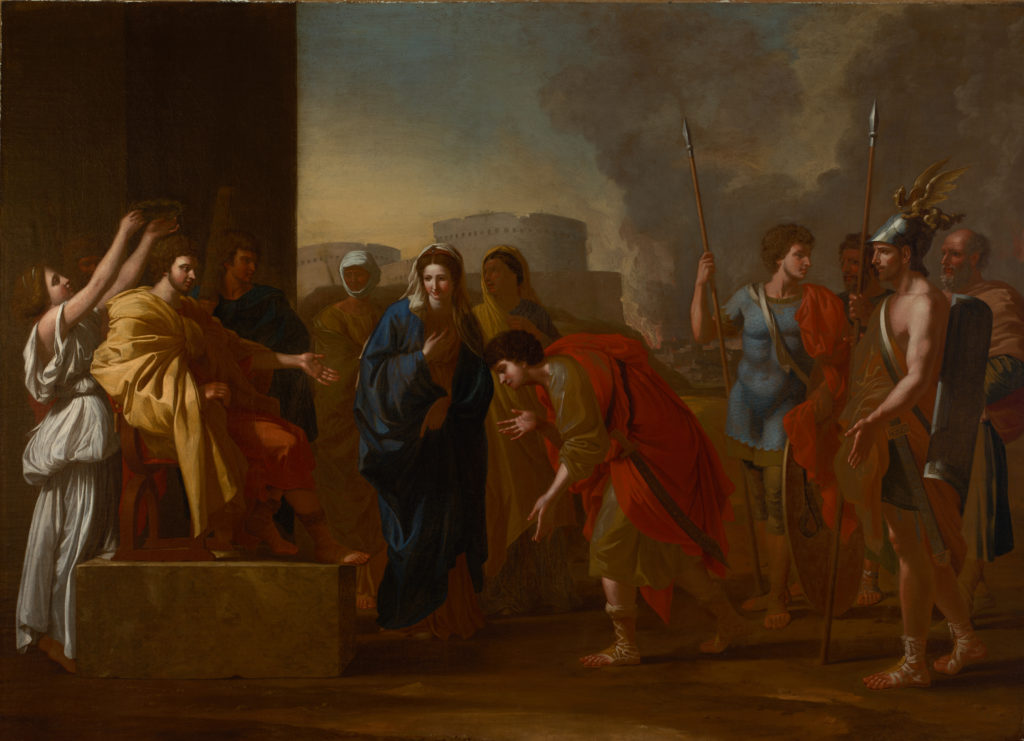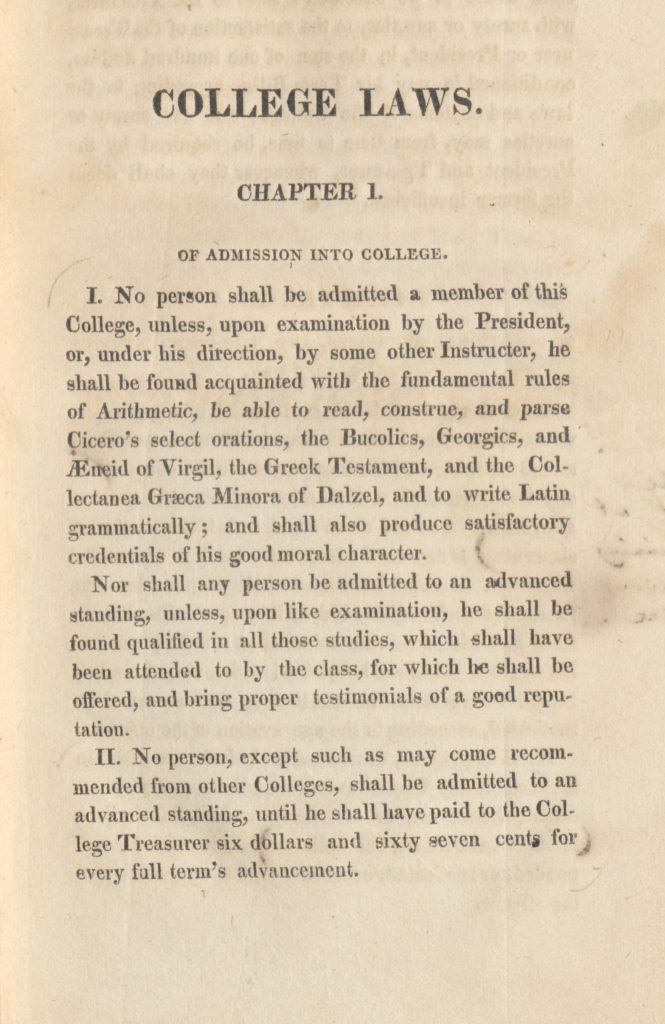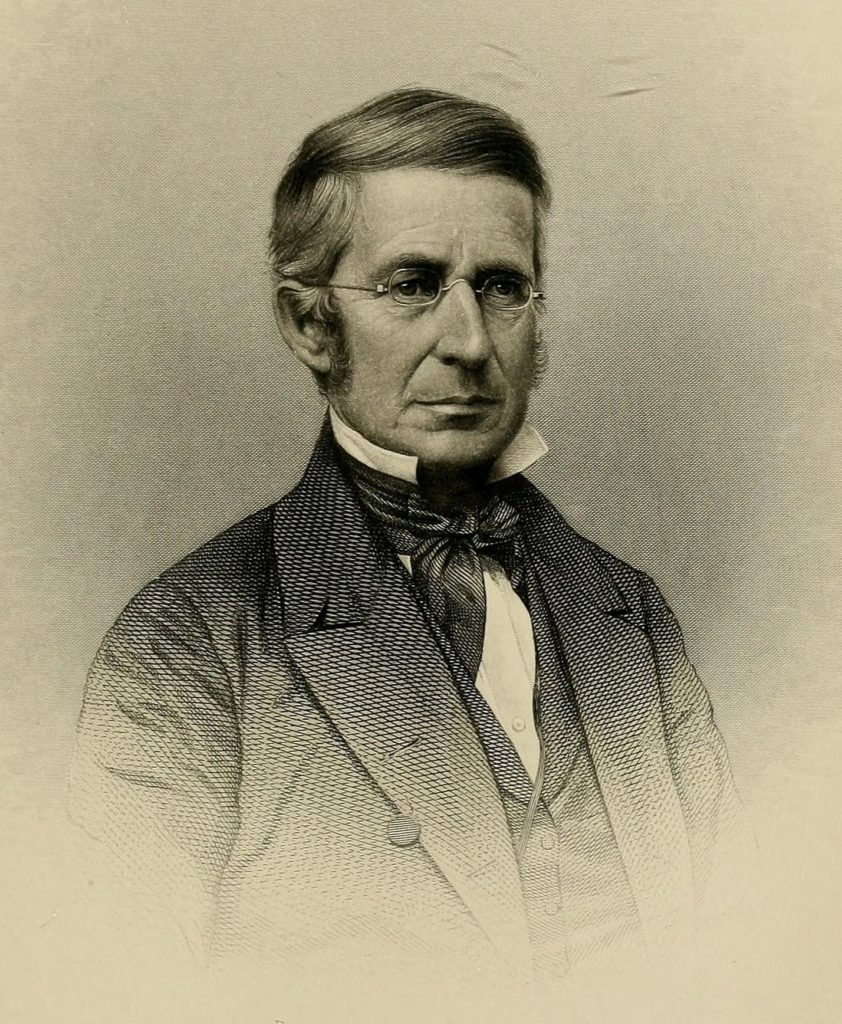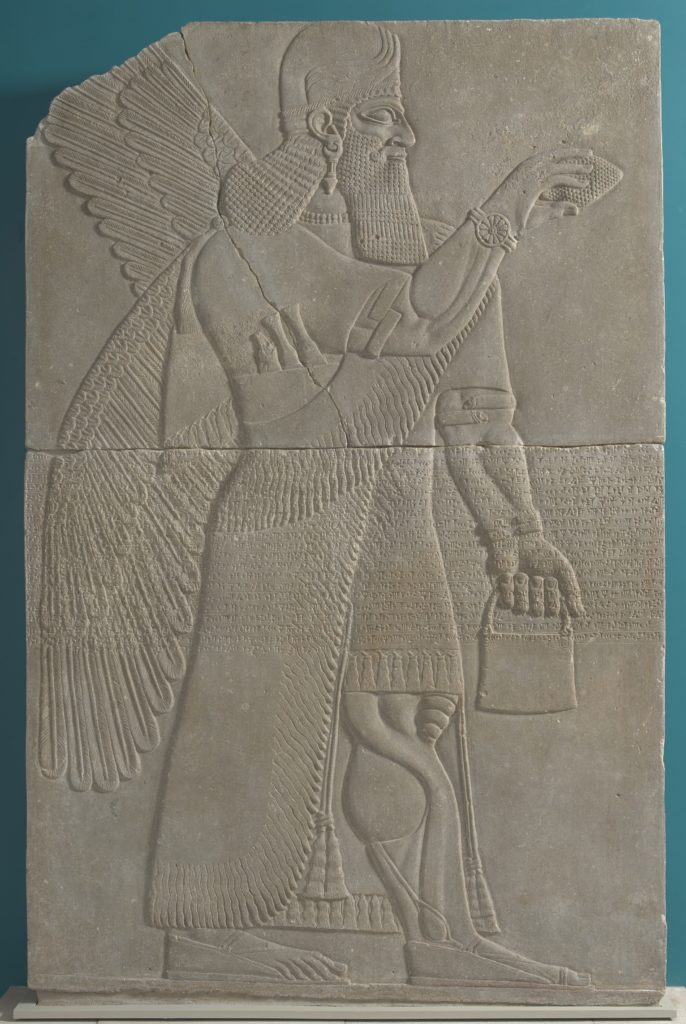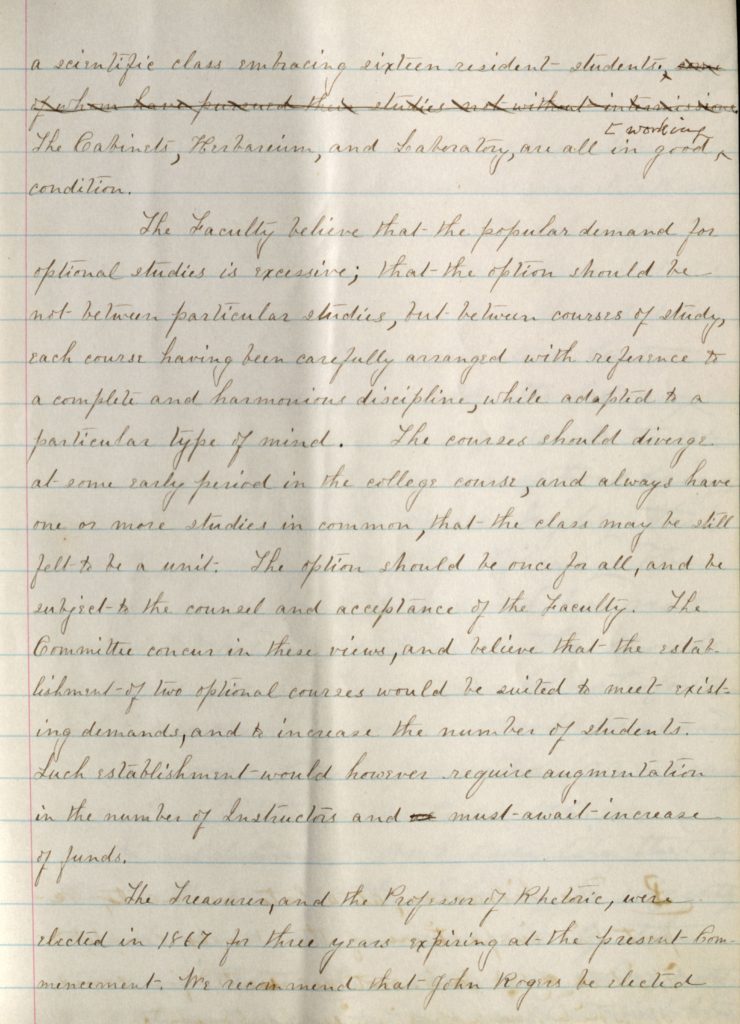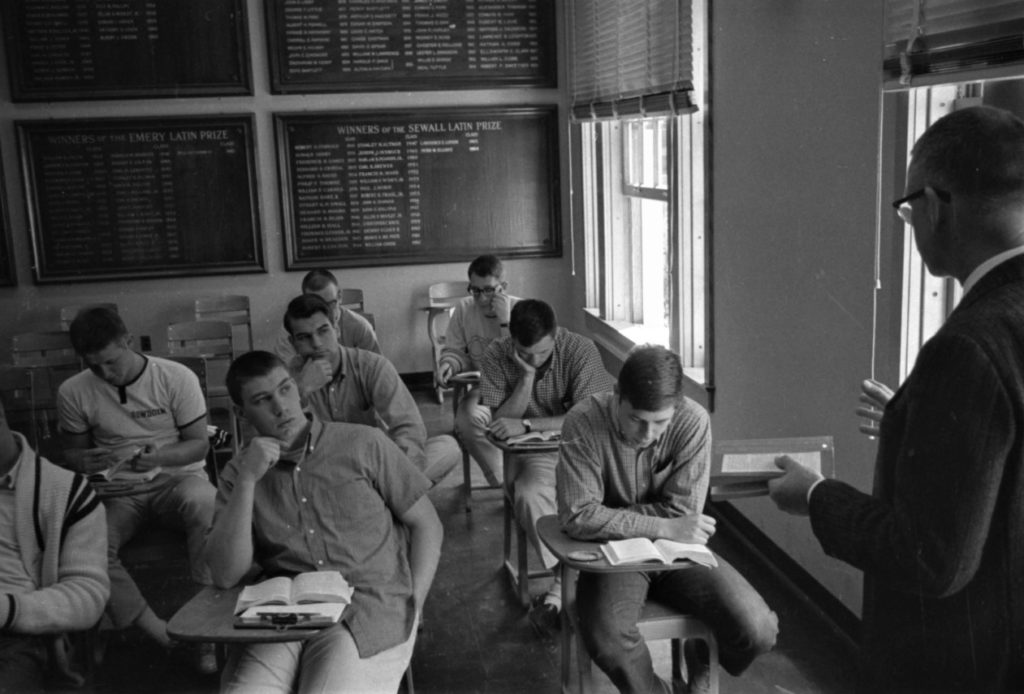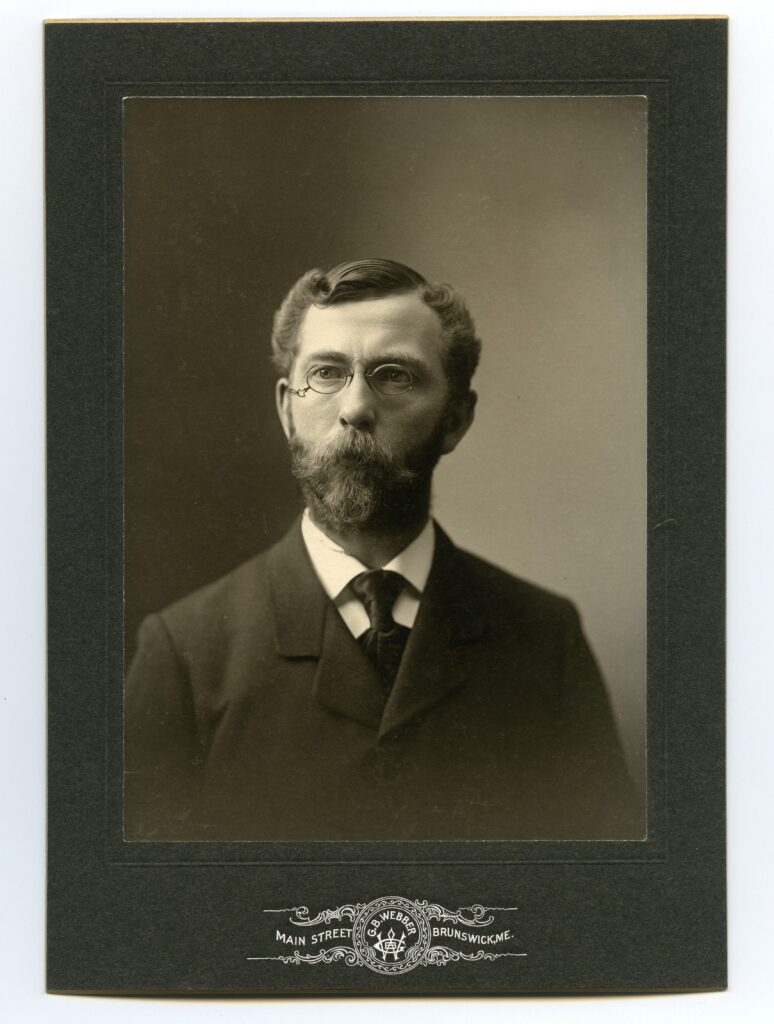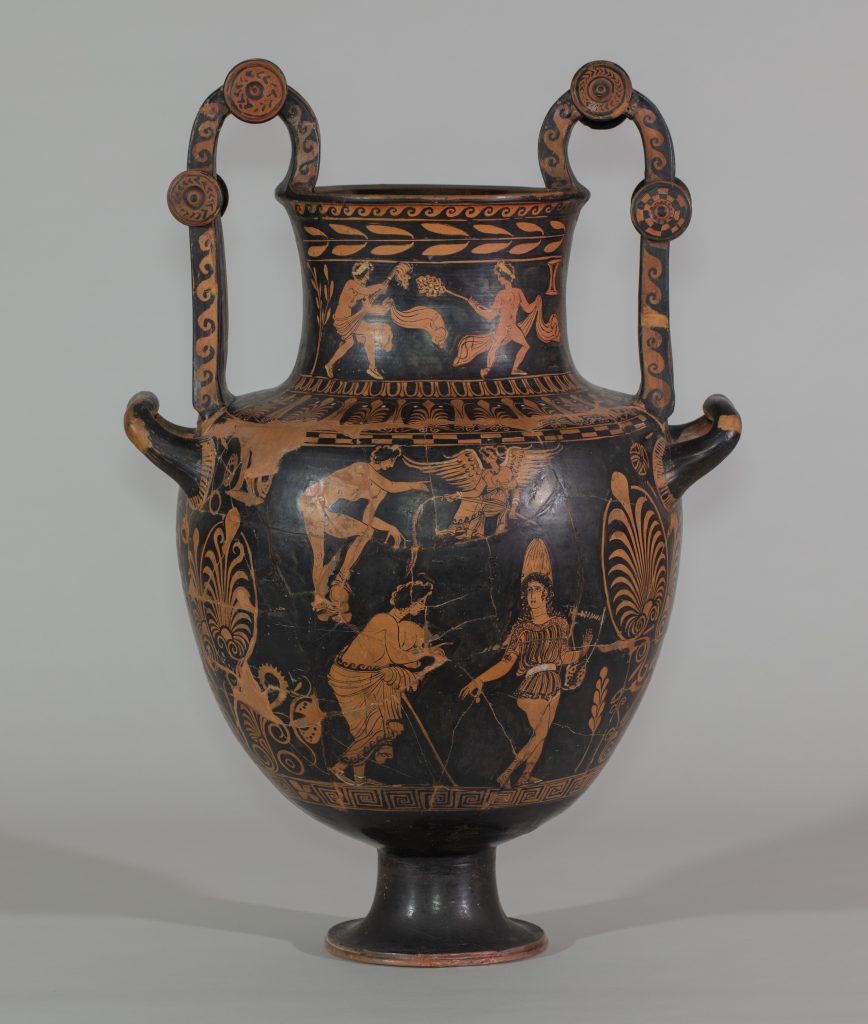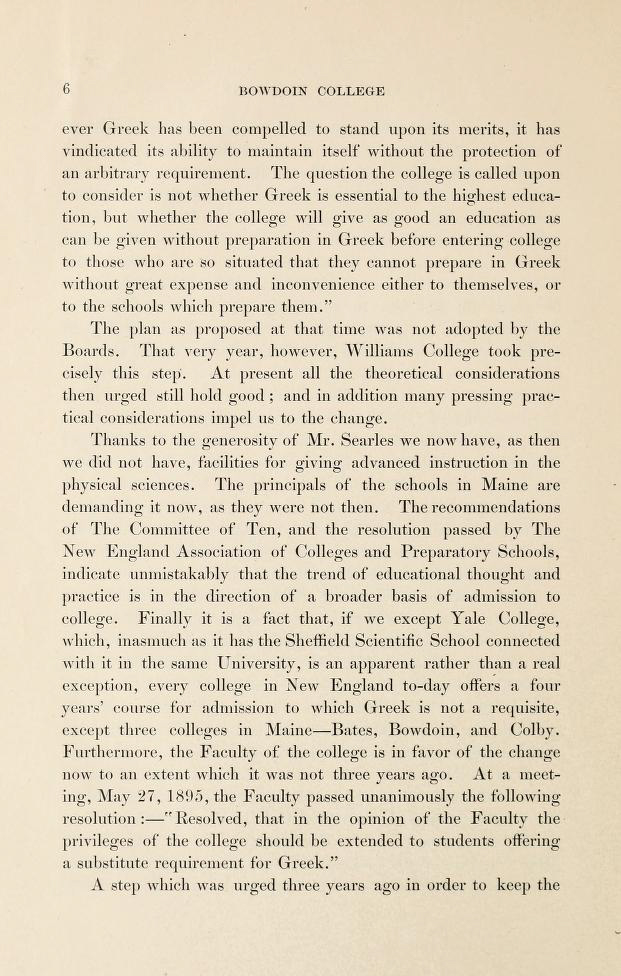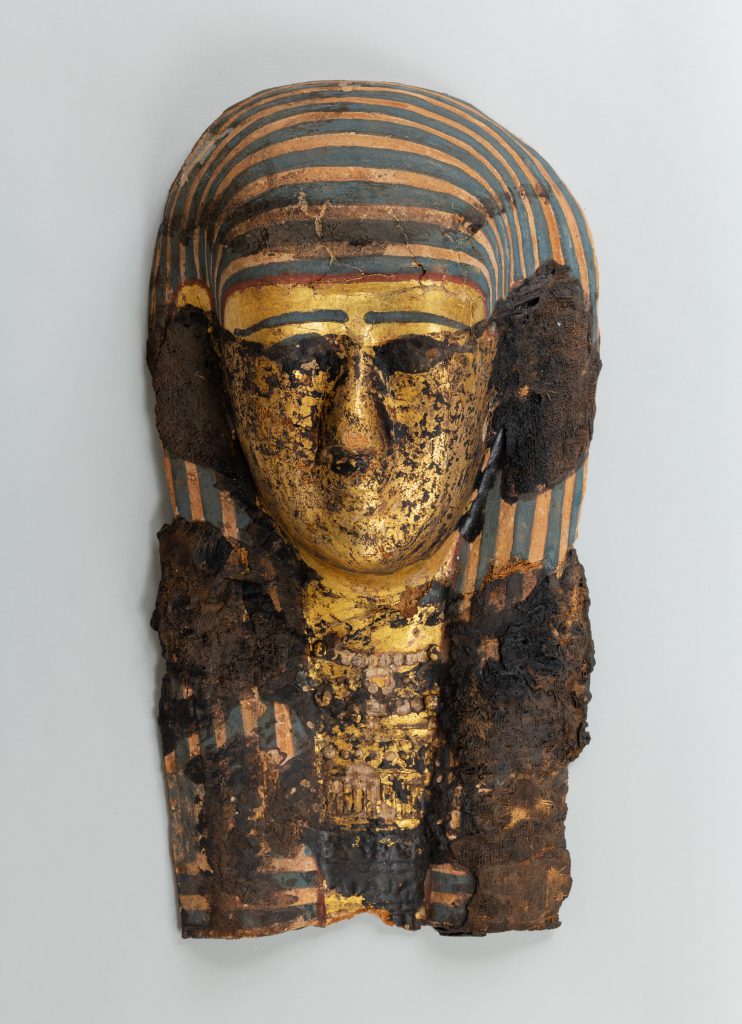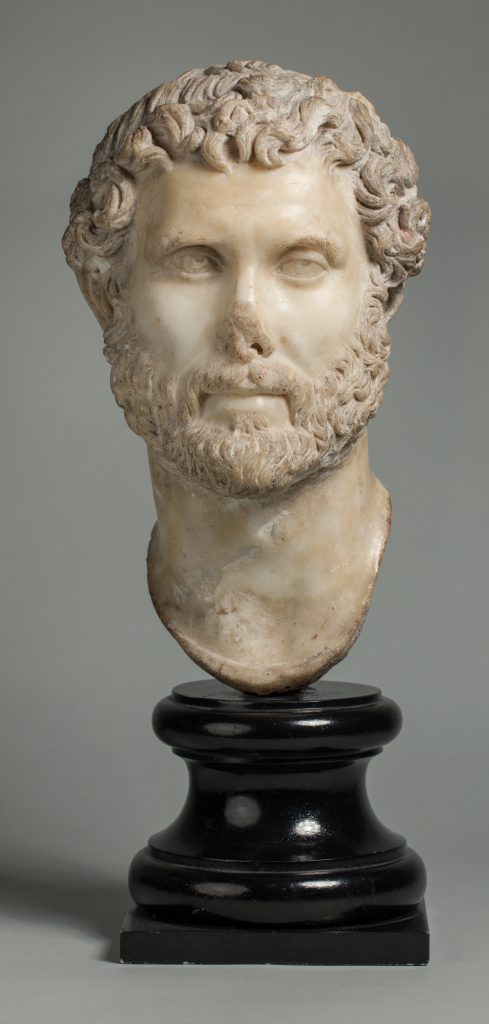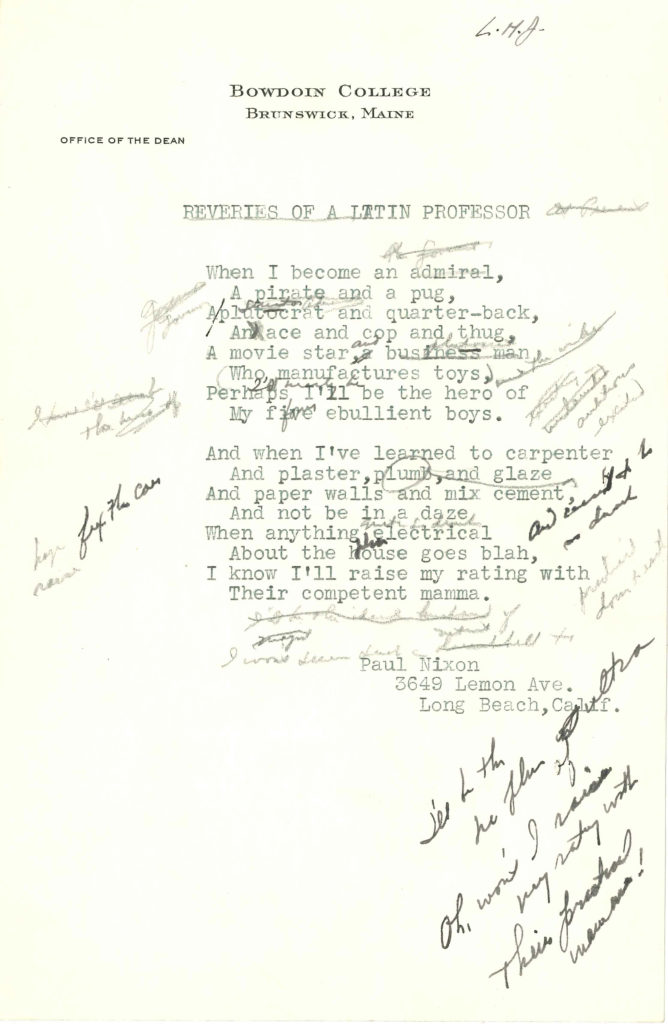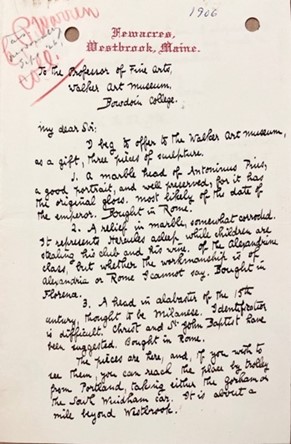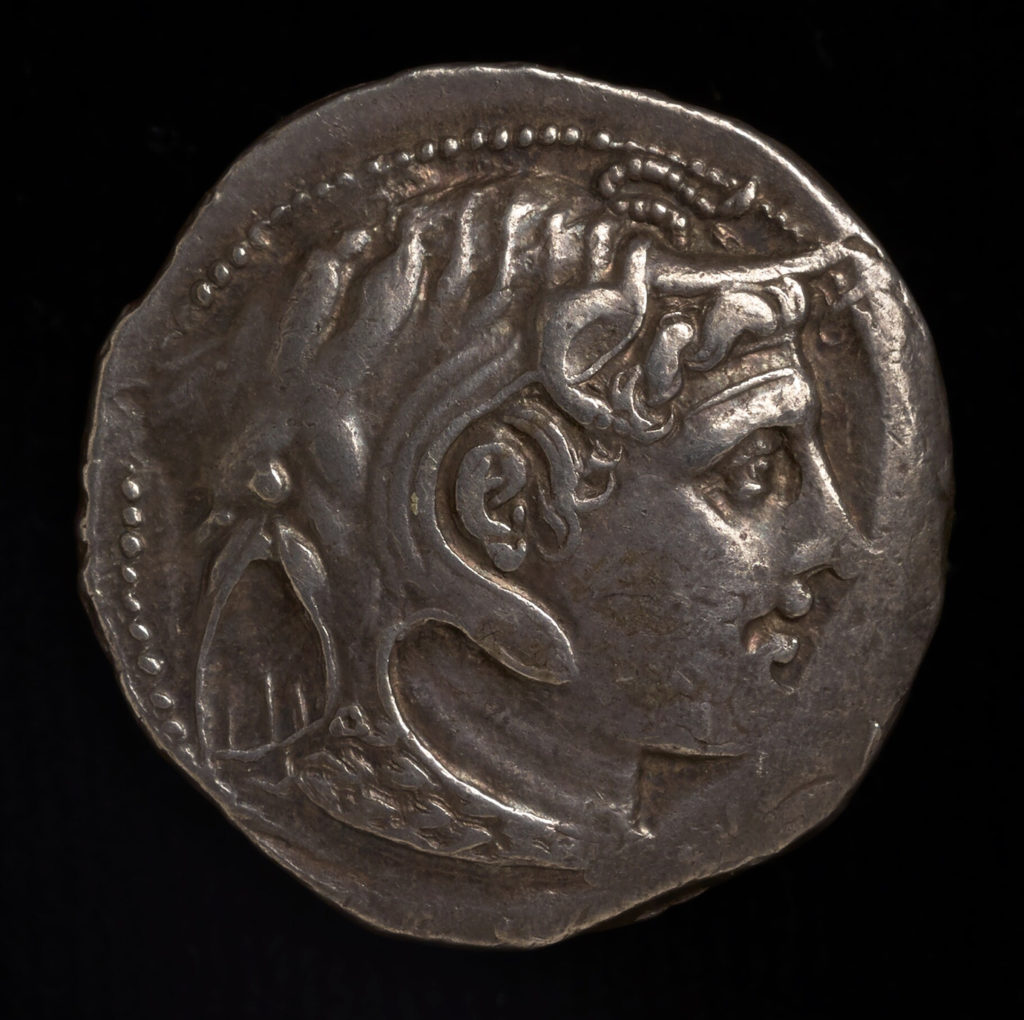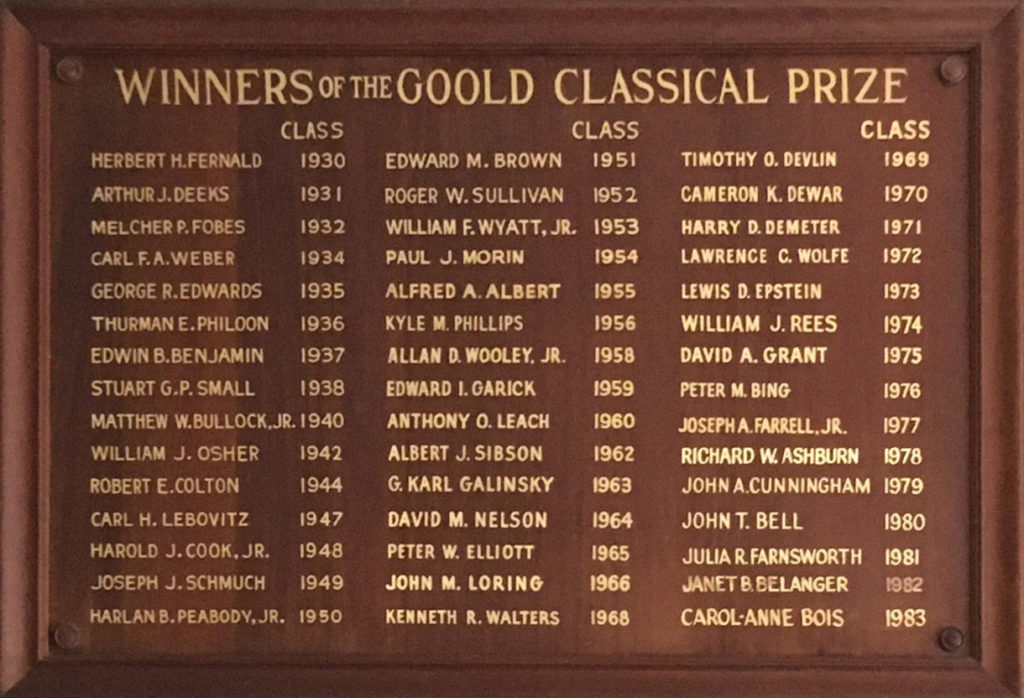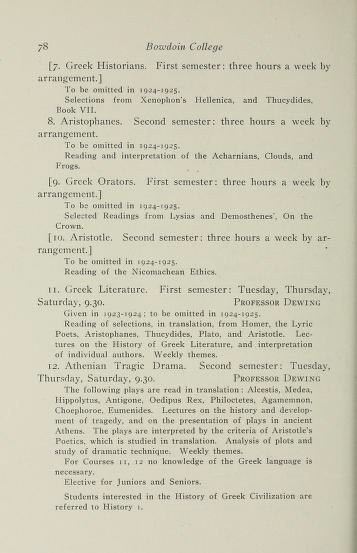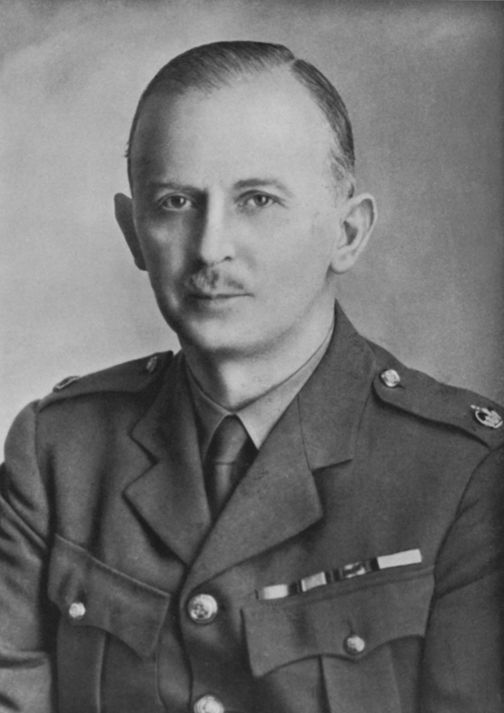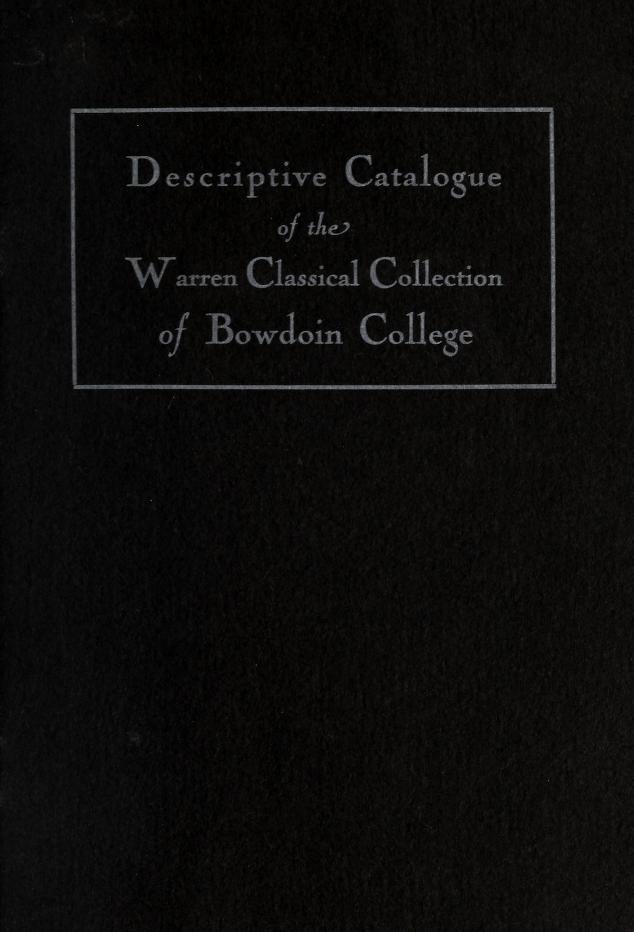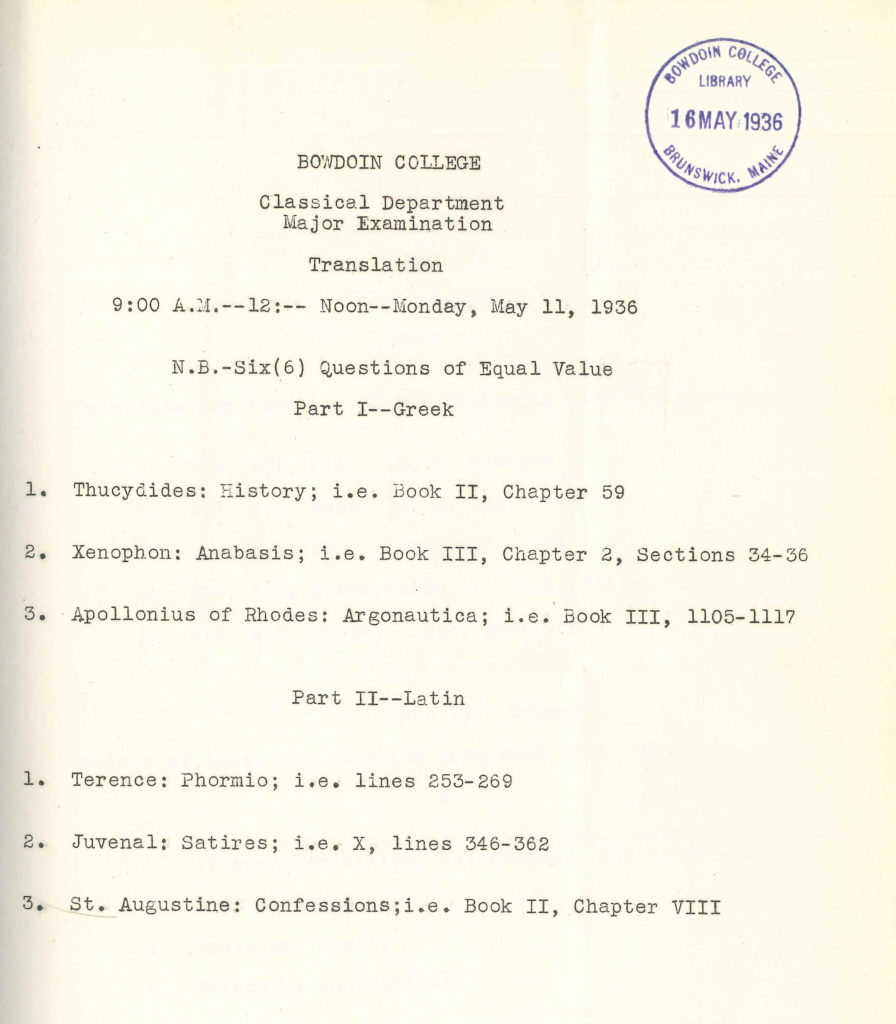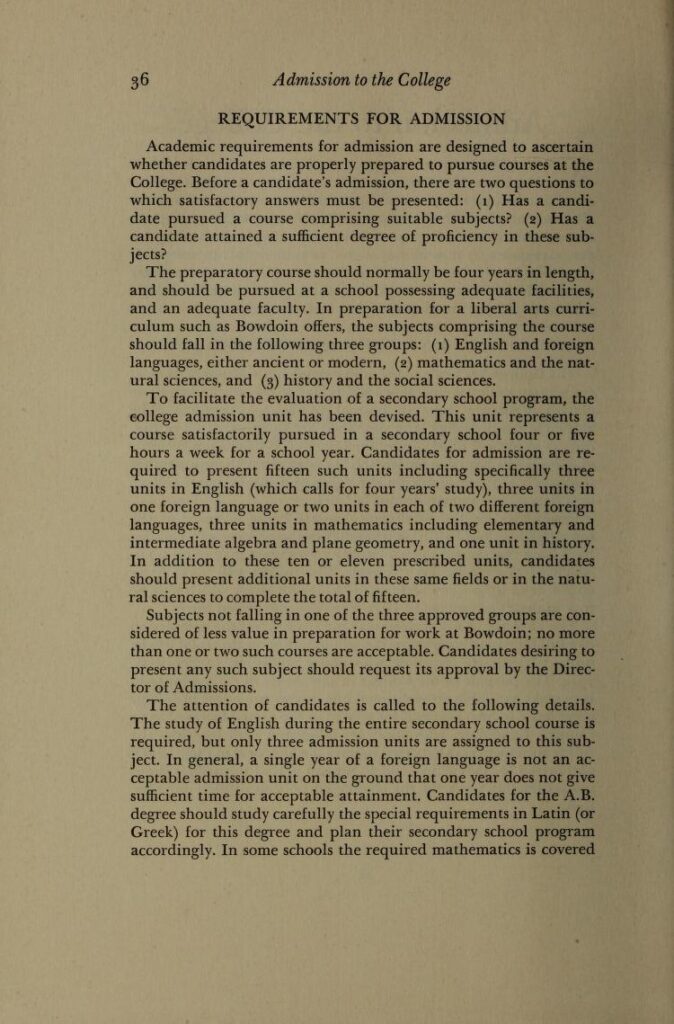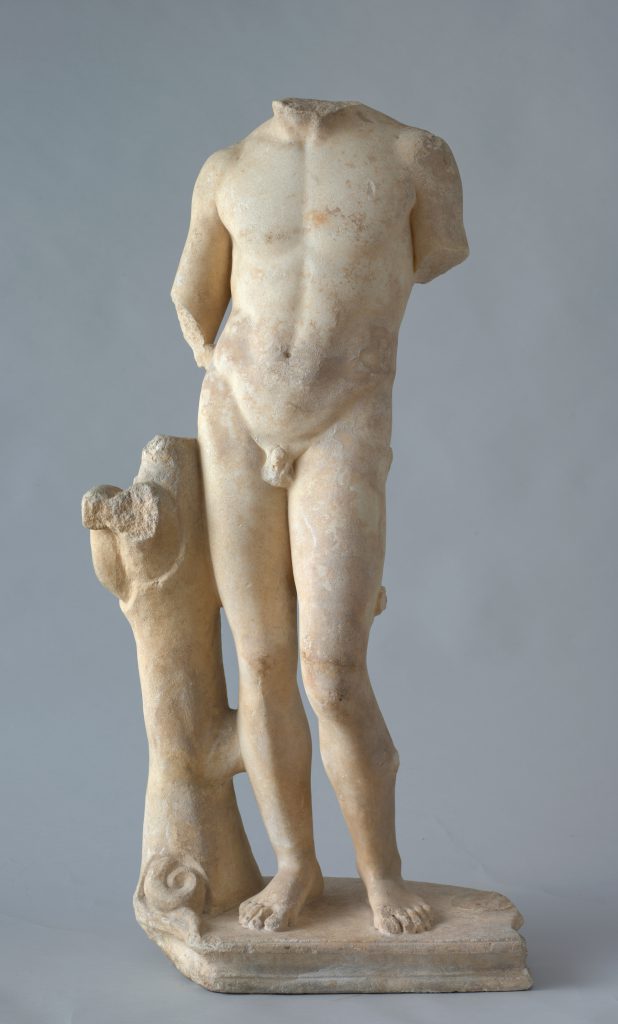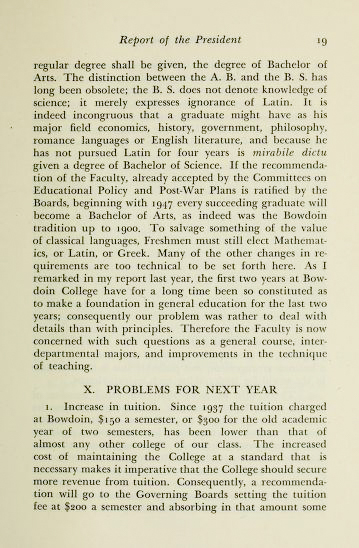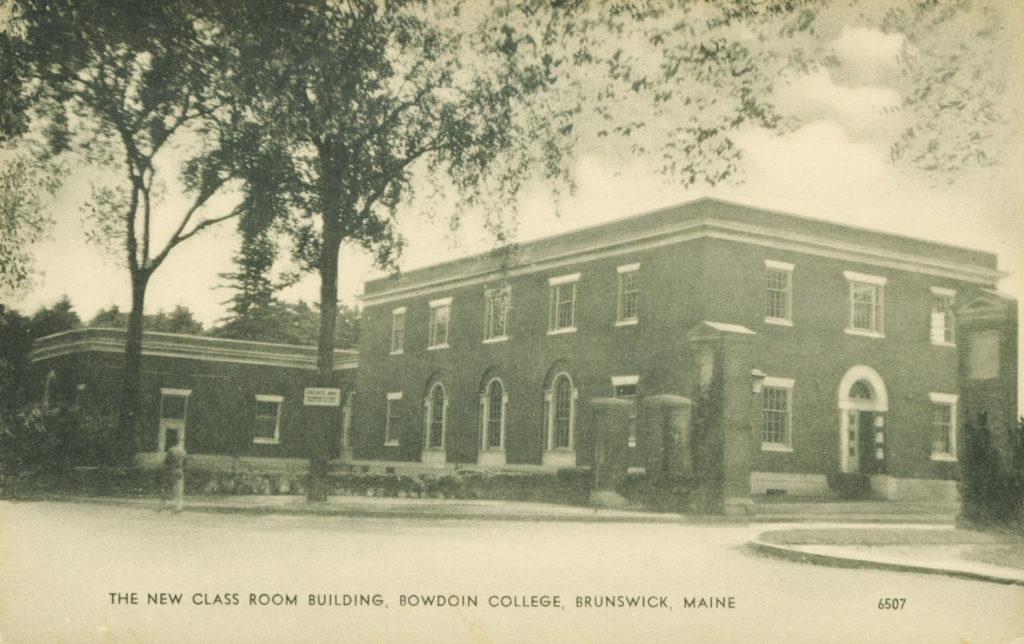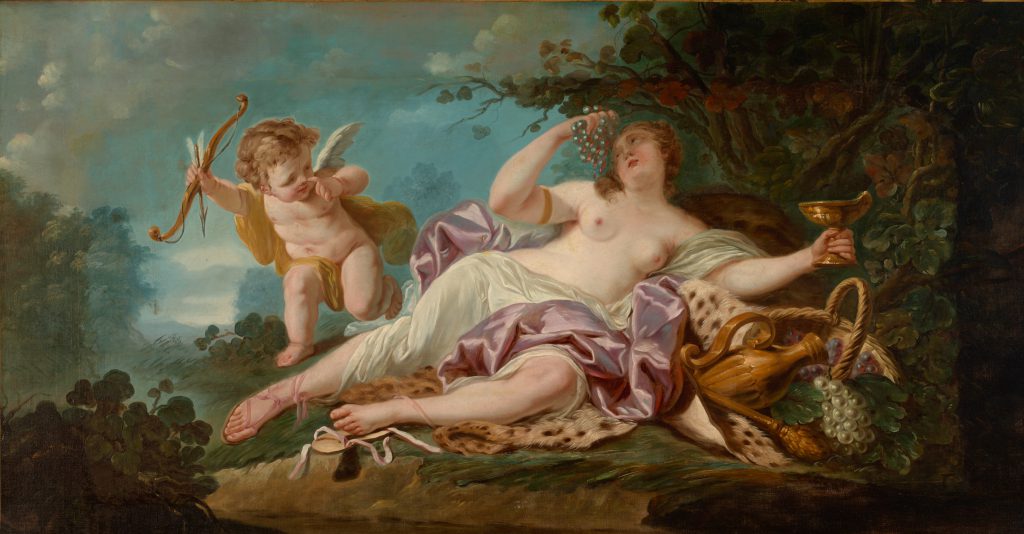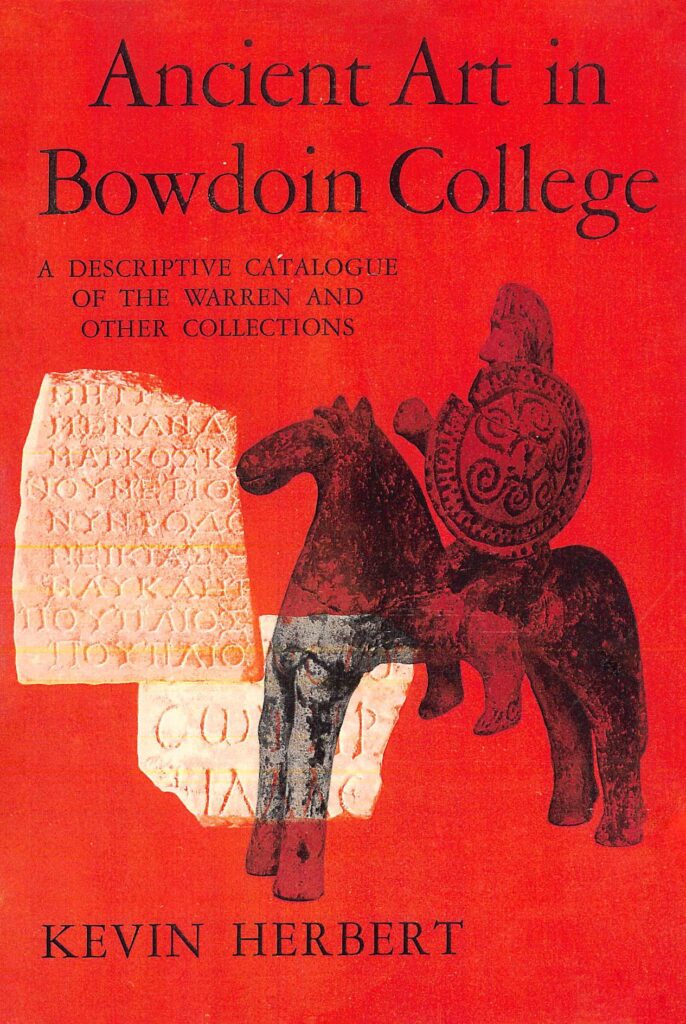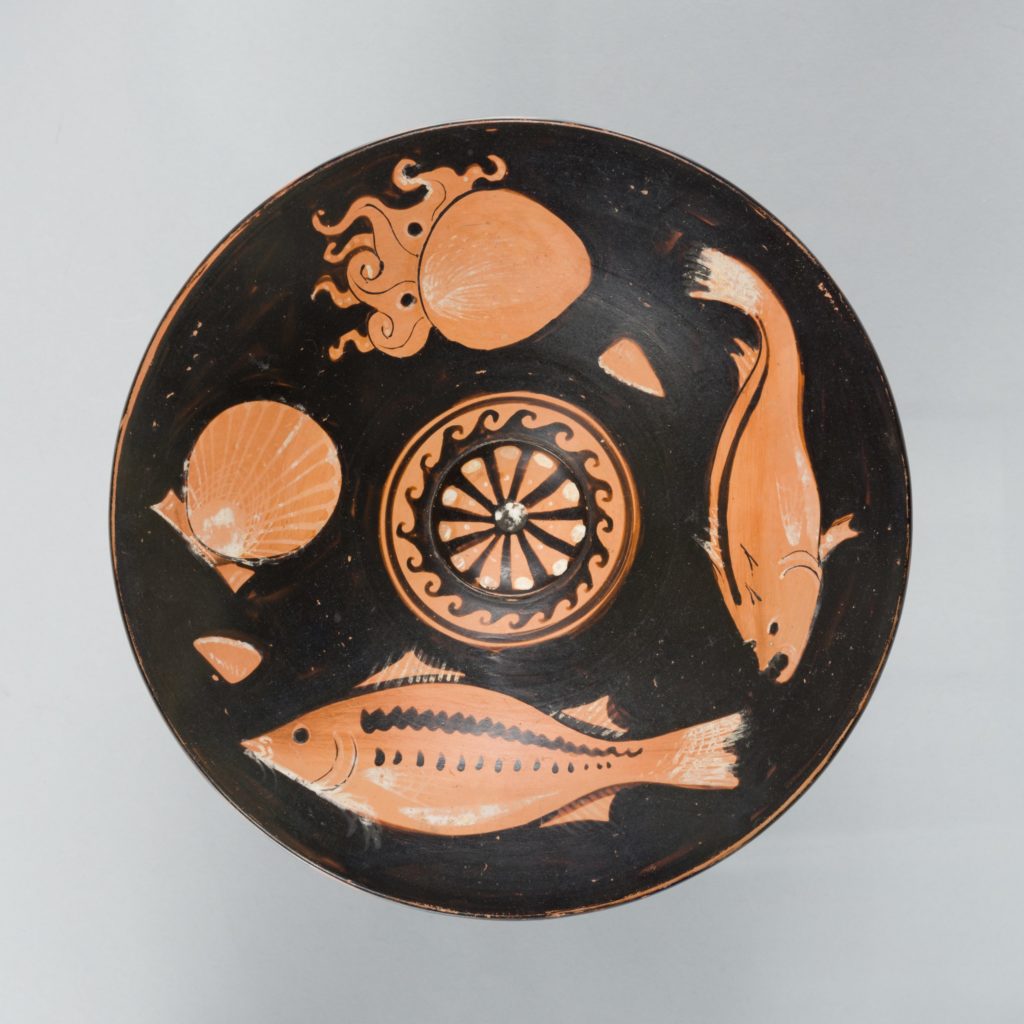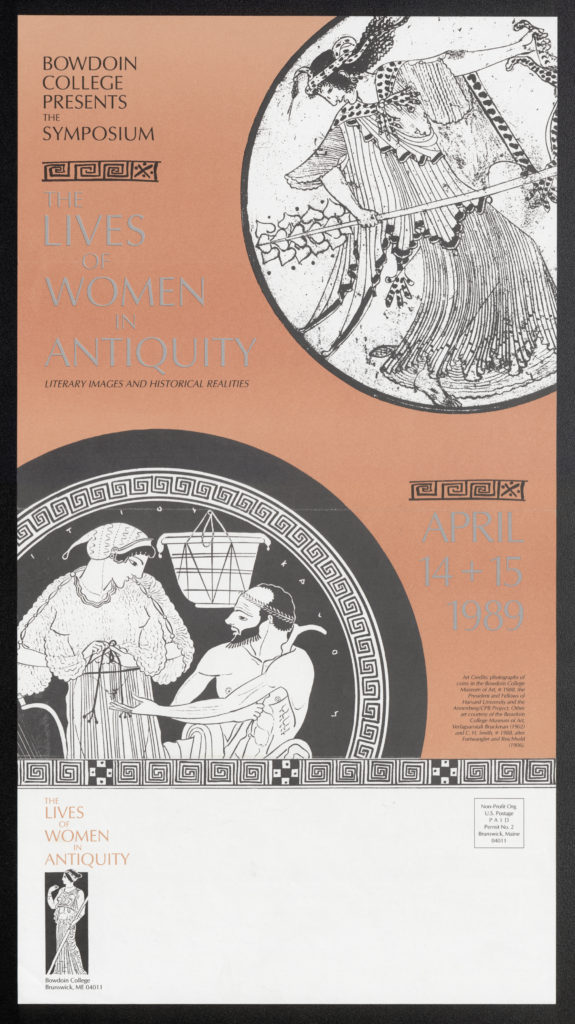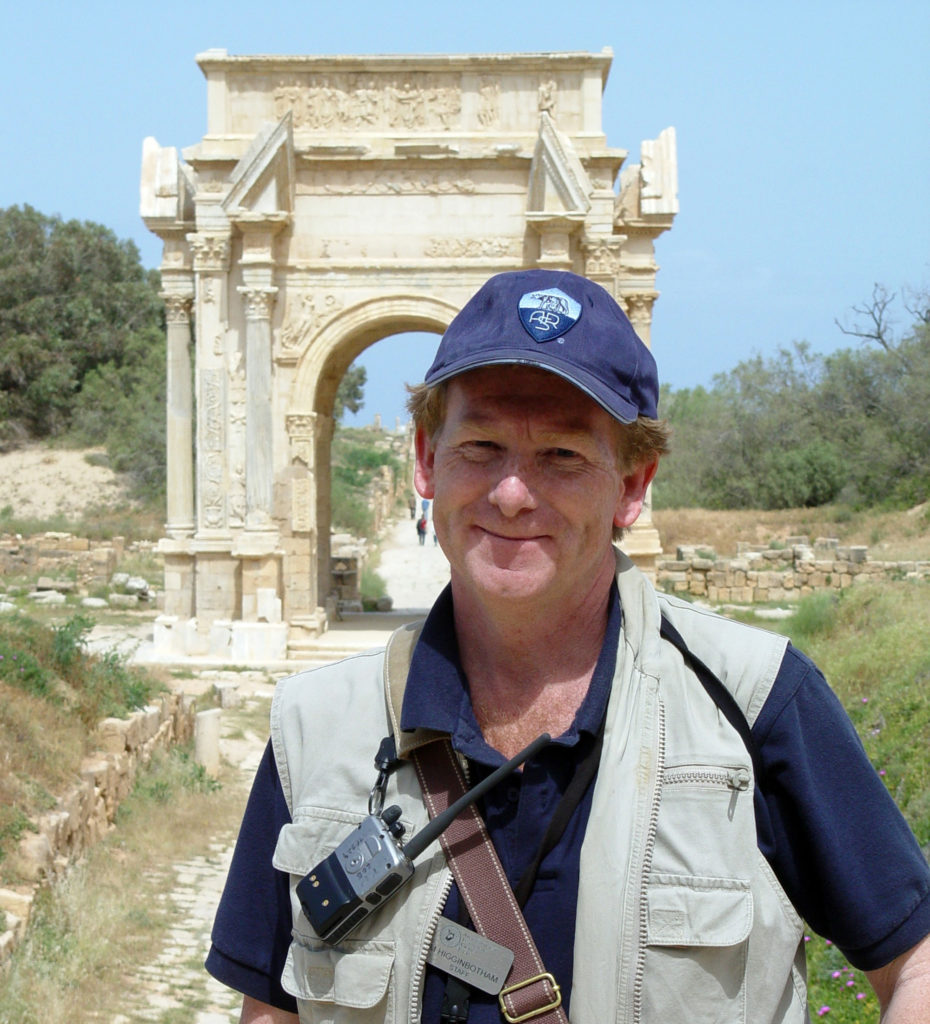Once their museum building, constructed in memory of their uncle Theophilus Wheeler Walker, was underway, the Walker sisters devoted themselves to acquiring art to build the College’s collection. These objects represented world art and cultures, from Asia to Europe. Among their most significant gifts were the four murals commissioned for the monumental rotunda. They decided on allegorical representations of great centers of artistic achievement in Western art—Rome, Athens, Florence, and Venice—commissioned by leading American artists.
Elihu Vedder’s (1836–1923) depiction of Rome, called The Art Idea, faced visitors as they entered through the original door. In the painting, the embodiment of Rome or Nature, the source of all inspiration, is seen holding the Greek letters Alpha and Omega. The other murals depict Venice (Kenyon Cox [1856–1919]), Athens (John La Farge [1835–1910]), and Florence (Abbott Thayer [1849–1921]). Theophilus Walker is memorialized in a bronze bas-relief sculpture, another ancient form, by Daniel Chester French (1850–1931), the American sculptor known for his monumental work. During dedication ceremonies on June 7, 1894, Martin Brimmer, president of the Museum of Fine Arts, Boston, affirmed “conspicuously and deliberately” the importance of art in the humanities studies offered at Bowdoin.
“Walker Art Building, Southwest View”, Local Call Number 2944. Courtesy of the George J. Mitchell Department of Special Collections & Archives, Bowdoin College Library, Brunswick, Maine.

